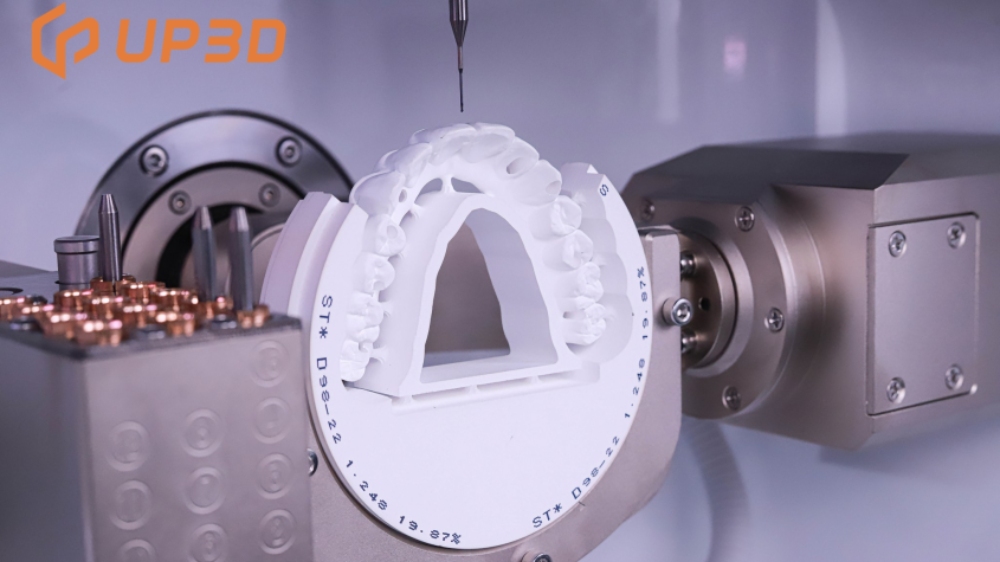Zirconia has revolutionized restorative dentistry by offering the perfect balance between strength and esthetics. But anyone who's worked with it knows that the outcome doesn’t rely on the material alone. In practice, the type of zirconia, how it's milled, and the level of automation in a lab can all play a part in the final restoration’s durability and appearance.
This article explores how labs can get the most from their zirconia workflows—combining experience, evolving CAM software, and smart equipment to achieve consistently reliable results.
Know Your Zirconia: Tailoring Strategies to Material Types
Not all zirconia is created equal. High-strength zirconia, typically used in posterior bridges or full arches, benefits from slower, more conservative milling to preserve structural integrity. By contrast, high-translucency zirconia used for anterior crowns requires a more delicate touch to maintain optical clarity.
In daily lab work, it's common to switch between these material types. That’s why many technicians now look for CAM platforms that support case-specific strategies—adjusting parameters for translucency, wall thickness, or restoration geometry. These adaptive systems help ensure the final restoration not only performs well, but also delivers on esthetics.
Precision Through Motion: The Role of Milling Technology
The quality of a zirconia restoration is heavily influenced by the machine behind the mill. Details such as toolpath smoothness, spindle control, and axis flexibility can subtly affect margins, internal fit, and surface texture.

While three-axis systems still serve in many settings, five-axis units—with optimized angulation and features like 90° milling—tend to offer greater accuracy in intricate areas. Especially when working with multi-layer zirconia, such movement control supports more natural transitions between layers. Some dry milling machines now skip the need for compressed air altogether. For instance, UP3D’s P55D uses a compressor-free design to maintain a cleaner chamber and reduce maintenance—an increasingly attractive feature for clinics and labs focused on streamlined operation.
Smart CAM Strategies: Beyond Nesting
CAM software today does far more than position restorations within a disc. Many labs have found that software with built-in material awareness can save hours per week by reducing manual prep and rework.
Instead of manually checking disc thickness or shade availability, smart CAM modules can recognize these variables and nest accordingly. UPCAM’s Smart CAM module, for example, automates this process and helps match restorations to the most efficient disc setup, reducing both waste and setup time. In busy labs juggling various zirconia types, this level of automation supports both precision and productivity.
Scaling with Automation: Smarter Production for High Volume
As order volume increases, so does the margin for human error. Labs handling dozens of zirconia restorations daily often turn to automation not just for speed, but for reliability.
From automated disc changers to integrated puck recognition systems, these tools reduce the chance of milling the wrong material or repeating jobs due to misconfiguration. UP3D’s P53DC, for example, integrates a smart material management system that identifies each disc’s shade and size—helping technicians stay focused on output rather than troubleshooting.
Protecting Your Investment: Maintenance Strategies That Matter
Even the most advanced systems need care. Skipping regular maintenance can undercut the very precision labs invest in.
Something as simple as running a tool inspection before a zirconia case—or cleaning the spindle housing weekly—can extend the lifespan of both tools and machines. To assist with this, platforms like UP3D’s MillMind provide real-time usage tracking and alerts when tools approach the end of their lifespan, helping labs avoid unplanned downtime.
Ultimately, it’s this attention to upkeep that protects the long-term quality of restorations and the reliability of your lab's workflow.
Putting It All Together: Building a Reliable Zirconia Workflow
Zirconia’s strength and esthetics are only fully realized when paired with the right approach. Understanding material behavior, using equipment that complements each case, and integrating smart software are all part of building a repeatable, high-quality process.
As digital workflows mature, labs that focus on thoughtful automation and consistent strategies will find themselves best positioned to deliver zirconia restorations that don’t just look good on day one—but stand the test of time.








